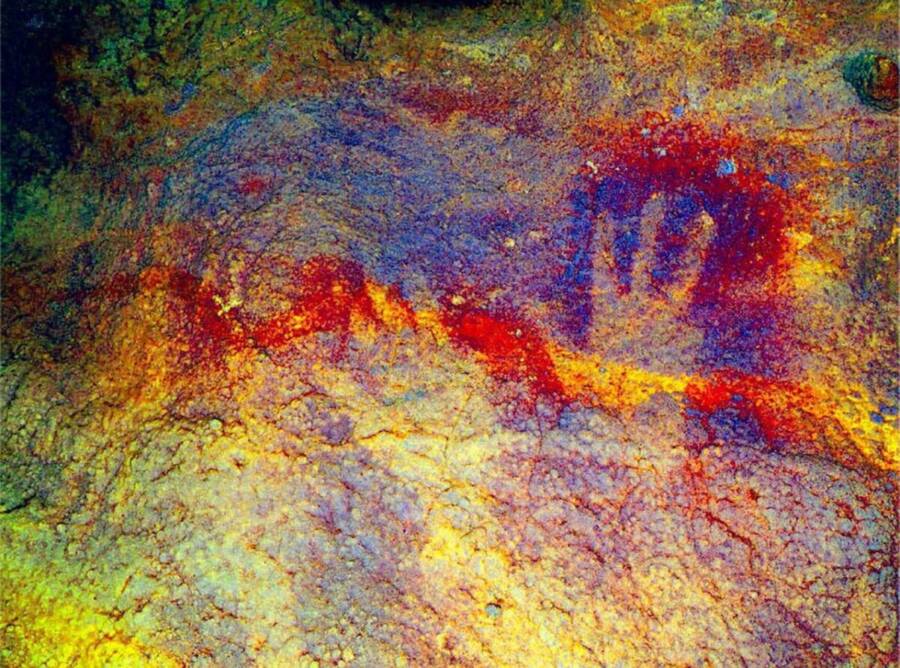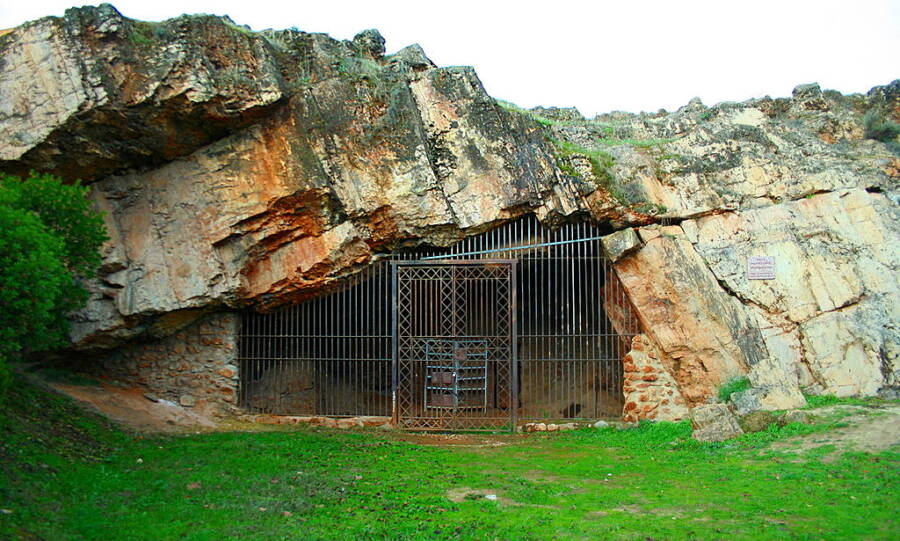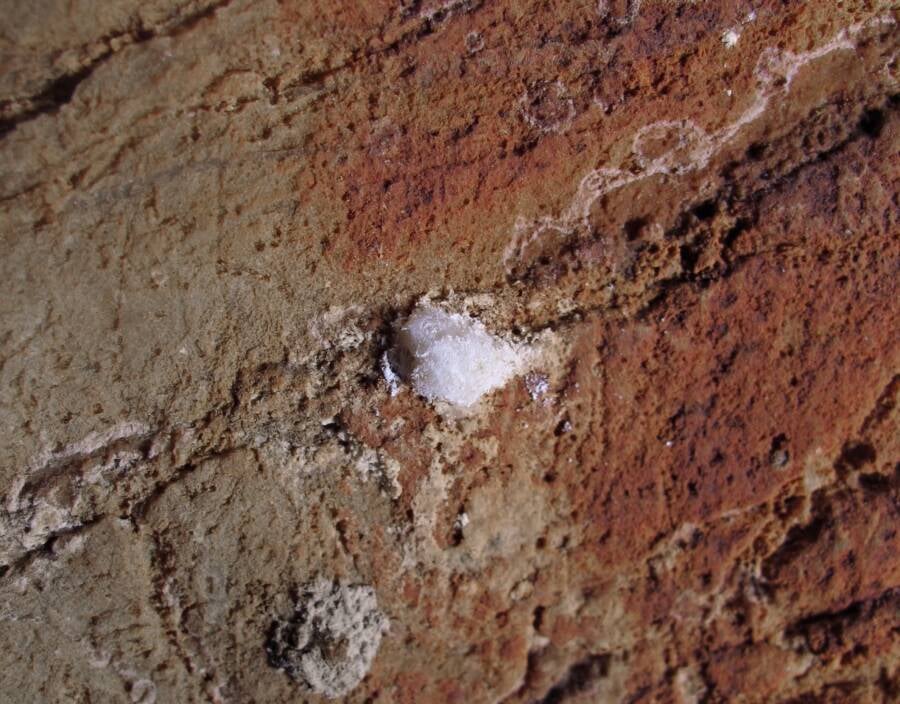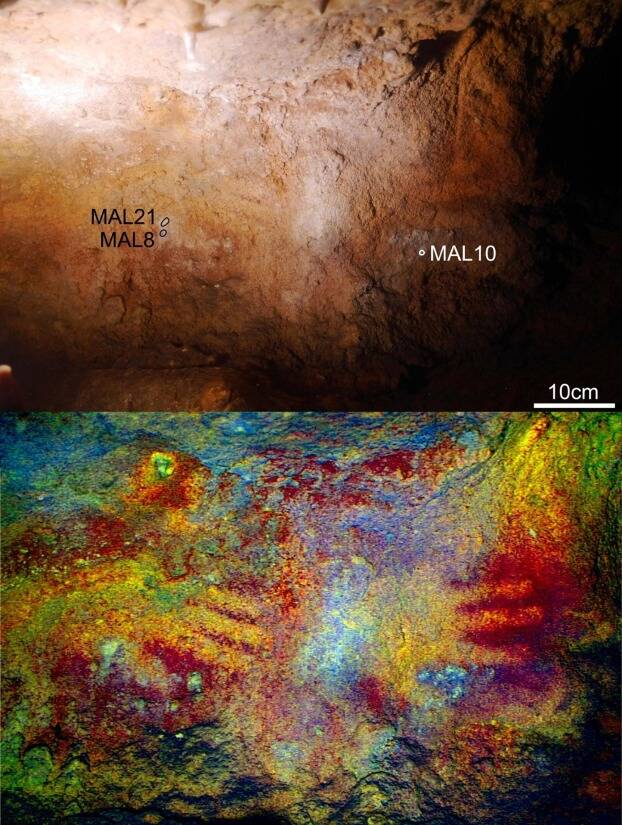Scientists used uranium-thorium dating to determine that some of the hand paintings in Spain's Maltravieso cave are 66,700 years old, making them the first major evidence of Neanderthal art.

CD Standish et al.Some of the hand silhouettes in the Maltravieso cave in Cáceres, Spain.
The Maltravieso cave in Cáceres, Spain, is famous for the 71 prehistoric hand paintings found on its walls. In 2018, researchers determined that the silhouettes were the first major evidence that Neanderthals created cave paintings, but their findings sparked controversy. Now, a second study has confirmed that the earliest hand prints were created more than 66,000 years ago — 20,000 years before modern humans arrived in Europe.
The discovery that Neanderthals and not Homo sapiens likely created the artwork is challenging longstanding beliefs that humans were the only species capable of artistic expression. These findings have the potential to change our understanding of Neanderthals’ behavior, their cognitive abilities, and their relation to our own evolution.
The History Of Maltravieso Cave And Its Prehistoric Art

Mario Modest/Wikimedia CommonsThe fenced entrance of the Maltravieso cave in western Spain.
Spain’s Maltravieso cave was first discovered in 1951, and in the decades since, researchers have been stunned by the paintings inside, particularly the 71 hand silhouettes. The artists created the prints by placing their hands on the stone walls of the cave and blowing pigment around them. When they removed their hands, the silhouettes were left behind.
Beginning in the 1990s, scientists analyzed these handprints using ultraviolet photography, but technology has advanced greatly since then. Still, accurately dating cave paintings is a difficult task. The pigments used to create them, typically iron oxides like hematite, can’t be radiocarbon dated.
So, in 2018, researchers from the University of Southampton turned to uranium-thorium dating in an attempt to determine the age of the hand paintings. This involved analyzing calcium carbonate crusts that formed on top of the art after it was created.

J. Zilhão/Science (2018)Calcium carbonate crust atop the red pigment of the hand paintings.
The analysis found that at least one of the prints dated back to the time of the Neanderthals, but because nobody had ever uncovered any real evidence that Neanderthals created art, the findings sparked debate in the scientific community.
Now, the research team has published an additional paper in the Journal of Archaeological Science to “present a more detailed U-series study of hand stencils within the cave” — and confirm that the paintings in Spain may indeed be the first example of Neanderthal art ever discovered.
The First Major Evidence That Neanderthals Created Cave Paintings
The modern uranium-thorium dating technique used by researchers allowed them to determine that the paintings in the Maltravieso cave dated to the Middle Paleolithic period (300,000 to 50,000 years ago) and the Holocene epoch, which began 11,700 years ago. What’s more, the oldest handprints found in the deepest parts of the Maltravieso cave were found to be at least 66,700 years old.
Modern humans didn’t arrive in Europe until around 42,000 years ago.

Clogg et al. 2000/CD Standish et al.The top photo depicts the cave wall as seen with the naked eye, and the bottom photo shows the same spot digitally enhanced to make the hand art more visible.
In a 2018 press release after the publication of the initial research, Dr. Chris Standish, an archaeologist at the University of Southampton, stated, “Our results show that the paintings we dated are, by far, the oldest known cave art in the world, and were created at least 20,000 years before modern humans arrived in Europe from Africa — therefore they must have been painted by Neanderthals.” This updated study confirms those results.
Researchers have long believed that Neanderthals did not possess the same ability for or interest in artistic expression as humans and thus did not produce cave art, but these findings are changing that narrative.
As the authors wrote in the abstract of the newly-released study, “This demonstrates that Neanderthals as well as modern humans could create these motifs.”
After reading about the hand silhouettes that are likely the first known example of Neanderthal art, learn about Vietnam’s Hang Son Doong Cave, the world’s largest cave. Then, view 21 photos from the world’s most beautiful caves.





